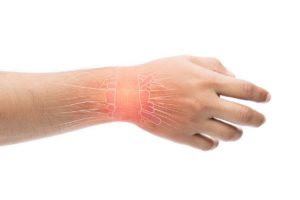Jammed Finger or Extensor Tendonitis; When to Seek Treatment
Extensor tendons are the tendons that allow you to straighten all of your fingers, including your thumbs. An injury to one of these thin tendons, or often known as a jammed finger, can be quite debilitating. When you injure one of these tendons, referred to as extensor tendonitis, you could lose the ability to extend your fingers or wrist if you don’t seek treatment.
 You may be wondering or think you are experiencing extensor tendonitis. My Houston, Texas practice wants to arm you with all the information you need about extensor tendonitis, so check out my guide on jammed fingers and extensor tendonitis.
You may be wondering or think you are experiencing extensor tendonitis. My Houston, Texas practice wants to arm you with all the information you need about extensor tendonitis, so check out my guide on jammed fingers and extensor tendonitis.
Why could I be experiencing extensor tendonitis?
There are a number of things that could cause a thin extensor tendon to rip from the bone to which it is attached. When you visit my practice, we will discuss your medical history, daily work habits and hobbies to see if we can determine a cause. Some common causes include, but are not limited to:
- Playing sports
- Experiencing a minor cut
- Dislocating a finger
- Jamming a finger
- Experiencing a fracture.
What are some common extensor tendon injuries?
An extensor tendon injury is not just one condition. Extensor tendon injuries can appear in a variety of forms.
- Cuts on the back of the hand can injure the extensor tendons. These can make it difficult to straighten your fingers and can affect your range of motion.
- We call a cut or tear to the extensor tendon itself Boutonnière Deformity. If you have Boutonnière Deformity the middle joint of your finger will appear bent.
- If you have cut or torn your extensor tendon from the bone, we refer to this as mallet finger. Commonly, patients suffer from Mallet Finger when something hits the tip of their finger and causes it to bend.